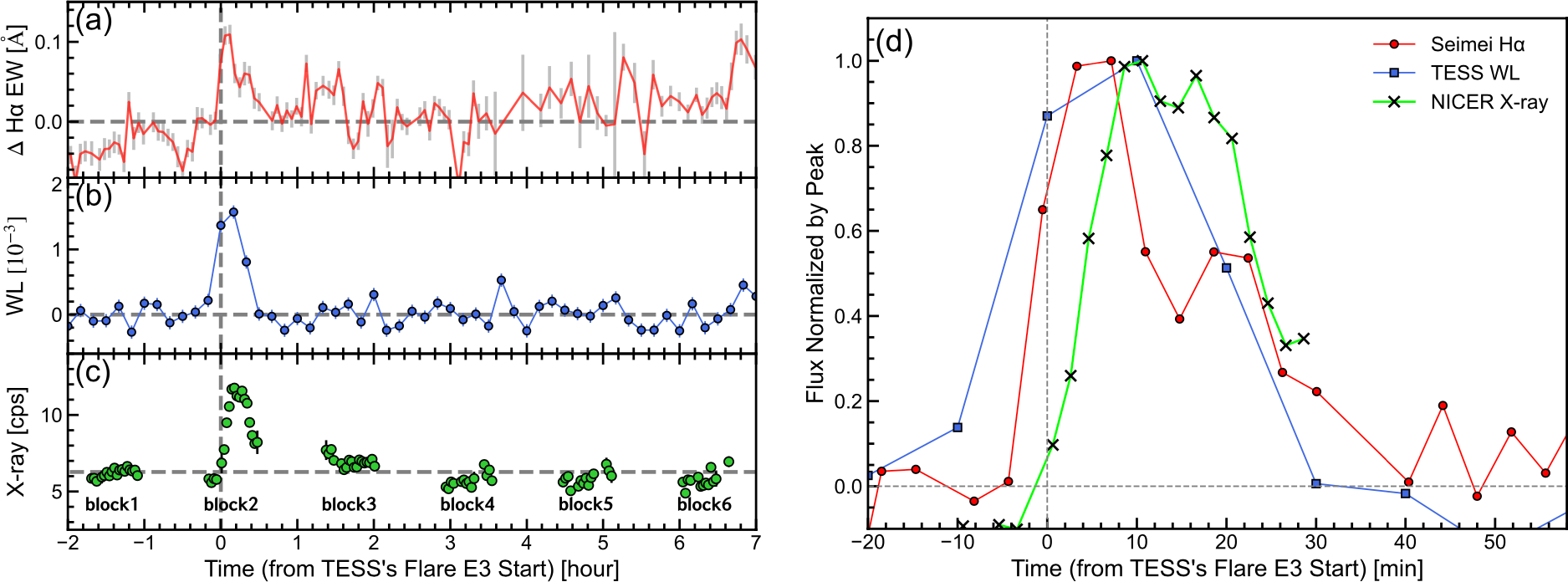NICER / ISS Science Nugget
for November 30, 2023
Coronal activity in a young Sun-like star
The star EK Draconis is considered an "infant Sun": its mass and radius are within 6% of our Sun's, but its age is between 50 and 120 million years, compared to our Sun's 4 billion. Its youth and relatively rapid rotation imbue it with a strong magnetic field and, as a result, significant activity in the form of sunspots, flares, and other phenomena that are well known from our Sun but at rates and with energies far exceeding those produced in our neighborhood. The study of young Solar analogues like EK Dra is important for understanding both the conditions experienced by any planets around those stars, but also for deeper insights into the Earth's own environment long before life arose.
A campaign of optical and X-ray observations of EK Dra was carried out over 12 days in April 2022, using NICER and two visible-light facilities: NASA's TESS observatory and Kyoto University's Seimei Telescope at Okayama Observatory in Japan. To complement the "white light" observations with TESS, Seimei was equipped with a spectrometer tuned to emission, in red light, from energized hydrogen atoms; this "H-alpha" spectral line is not only a tracer of ionized hydrogen, but measurement of its Doppler shift also provides a handle on the velocity of the heated gas. The wide-ranging results of the campaign, led by K. Namekata (Natl Astronomical Observatory of Japan) and recently accepted for peer-reviewed publication in The Astrophysical Journal, included the detection of three "superflares" (more energetic than any flare from our own Sun in the historical record), two of which provide the first-ever evidence for eruptions ("prominences") from a solar-type star beyond our own -- through blue-shifted H-alpha emission lines -- and a coronal mass ejection (CME) associated with one of them. One of the flares was well-sampled by all three instruments, demonstrating that the X-ray emission is delayed relative to the other wavelengths, a finding that informs our understanding of energy transport, in the form of accelerated particles, from the stellar corona to the dense "surface" gasses of the star, which are heated to sufficiently high temperatures that they glow in X-rays.
NICER is involved in several additional planned multi-wavelength studies of flaring Sun-like stars to assess the habitability of exoplanets and that of the young Earth.

Multi-wavelength observations of a superflare from the star EK Draconis on 17 April, 2022. Panel (a) shows changes in the strength of H-alpha emission, an indicator of ionized hydrogen, (b) represents the star's white-light brightness as measured with NASA's TESS observatory, (c) shows multiple ISS orbits of NICER data (with gaps where the star was behind the Earth), and (d) zooms in on 80 seconds around the peak of the flare, with a clear delay in X-rays relative to the optical emission (Credit: Namekata et al. 2023).
<< Previous
Main Index
Next >>